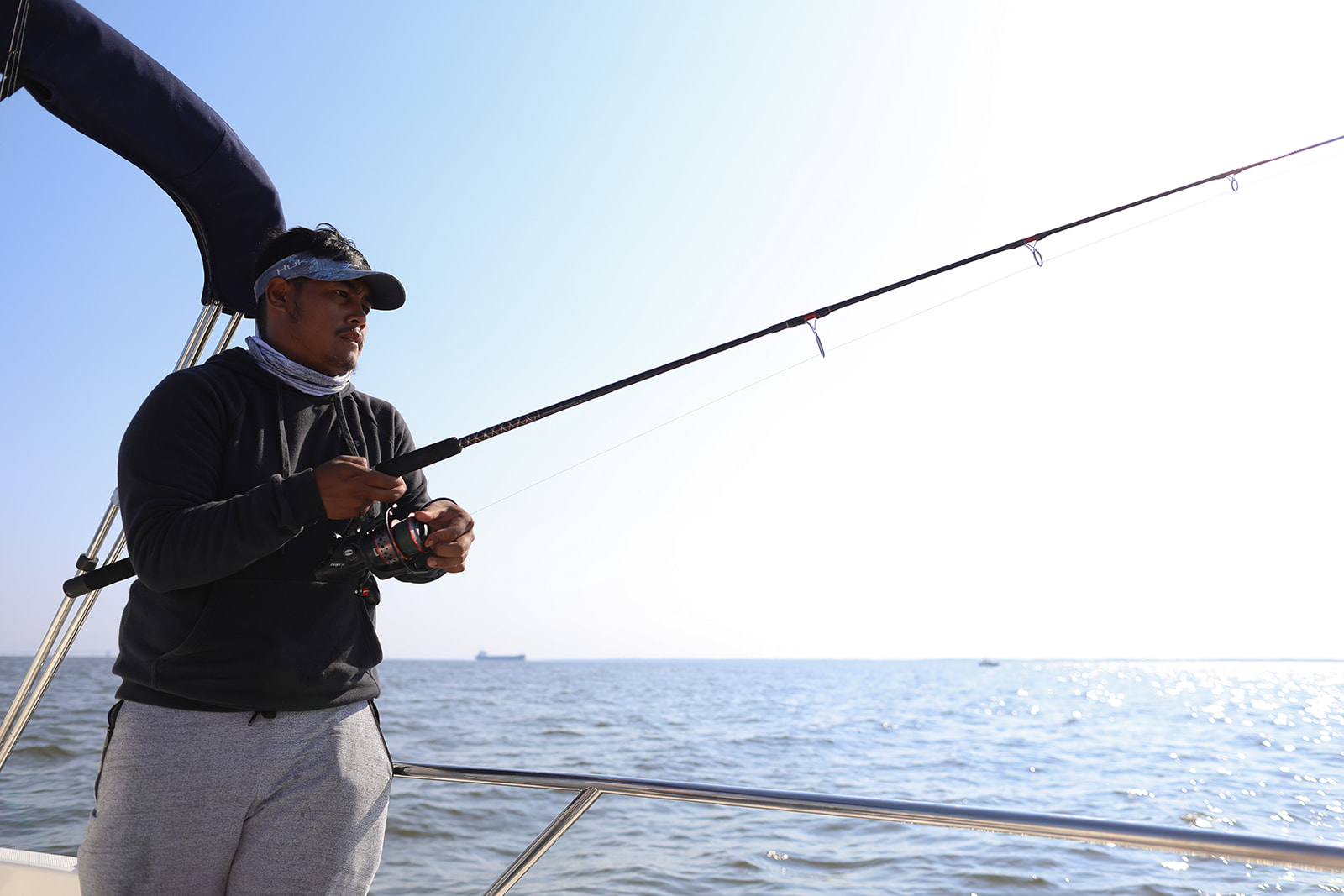
Catfishing in Maryland
Maryland is home to a variety of catfish including the native catfish to the Chesapeake Bay - white and and three invasive catfish - blue, channel and flathead offering a range of opportunities for novice and avid sportsmen to meet their catfish expectations. From reeling in a 100-plus pound blue catfish on the Potomac River, to hooking the small and energetic white catfish in the Chesapeake Bay and its tributaries, you might just find a new way to spend the day with the family.
White Catfish
The white catfish is the only species native to the Chesapeake Bay, and it's the smallest of the large North American catfish species. White catfish lack scales and possess an adipose fin, as well as a single, often serrated spine in the dorsal and pectoral fins. They are bluish-gray on their back and sides and white underneath. Their tail is moderately forked and they have a noticeably broadhead, large mouth and stout body. They are smaller in size than channel catfish. While they are primarily a tidal water species, they can also be found in freshwater lakes, ponds, rivers and streams, living in mud-bottom pools, open channels, and the backwaters of small and large rivers.
Channel Catfish
Channel catfish can weigh up to sixty pounds. They are long slender fish with barbels on the chin that look like long black whiskers. There are four pairs of barbels around the mouth, two on the chin, one at the angle of the mouth, and one behind the nostril. They are generally gray to greenish-gray on the upper part of its slender body, silver to white on the lower half and belly and have a deeply forked tail. Small adults and juveniles have black or dusky spots on their body. A non-native species, channel catfish have become very proliferatedl in tidal and non-tidal waters across the state.
Blue Catfish
Blue catfish are the largest of the North American catfish and can easily exceed 100 pounds. They are generally slate blue on the back to silvery/white on the underside and have a deeply forked tail. The native range of blue catfish extends from Minnesota and Ohio southward into Mexico. They prefer the large river basins of the Ohio, Mississippi, and Missouri River drainages. However, due to extensive introductions, their current range incorporates several Atlantic drainage systems as well. As an introduced sport species in tidewater Virginia, blue catfish have become very plentiful in the Potomac River and in several Virginia tributaries to the Chesapeake Bay.
Flathead Catfish
Flatheads differ greatly in appearance from most other catfish species. They have a squarish tail, sometimes slightly notched. Their backs and sides are often an olive or light brown color ffd``with darker mottles or specks, and their bellies are often white or pale in color. Their heads are compressed, or flattened, and they have a protruding lower jaw. Flathead catfish can reach sizes in excess of 100 pounds but much smaller specimens have been encountered in the Chesapeake Bay region. Flathead are an introduced species and are currently found in only a few places in the Chesapeake Bay; the Potomac River, Upper Bay, Elk and Sassafras Rivers.
Baits or Lures?
Oftentimes, bass fishermen get a slimy surprise when an aggressive flathead or channel catfish hits the swimbait on chatterbait they are casting. So be prepared because, like most species, they will have a reaction strike towards a lure.
The most common way to target these fish is casting a bait, dead or alive, and waiting for the fish to find you. Anglers often use chunk baits, worms, hot dogs or even chicken livers - they will almost eat anything. Catfish balls seem to do the trick especially well for those who don't want to get too messy. You can find them at any of your local tackle shops.
Slip sinker rigs are great and simple. Just add an egg weight to your main line, and attach a leader with a swivel. It’s versatile and can be used for all species of cats. The slip sinker rig is the most widely used setup for hardcore catfisherman.
Another great rig is a three-way swivel. Anglers simply attach the three-way swivel to the main line, then attach a leader tied to a weight on one end and a leader with a hook to the other.
Get Ready for Your Next Fishing Outing
In need of additional information, inspiration, or a preview of what Maryland has to offer? Check out Fish & Hunt Maryland’s latest articles written by fellow sportsmen and women and local partners.
Be sure to acquire your license from the Maryland Department of Natural Resources if you plan on heading out on your own, charter passengers are covered by the captain’s license.
Visit our Planning Resources page for information on fishing charters and guides, lodging options, marinas, retailers, and more. And if you’re up for a quick getaway, be sure to check out Visit Maryland’s page featuring summer deals and packages.